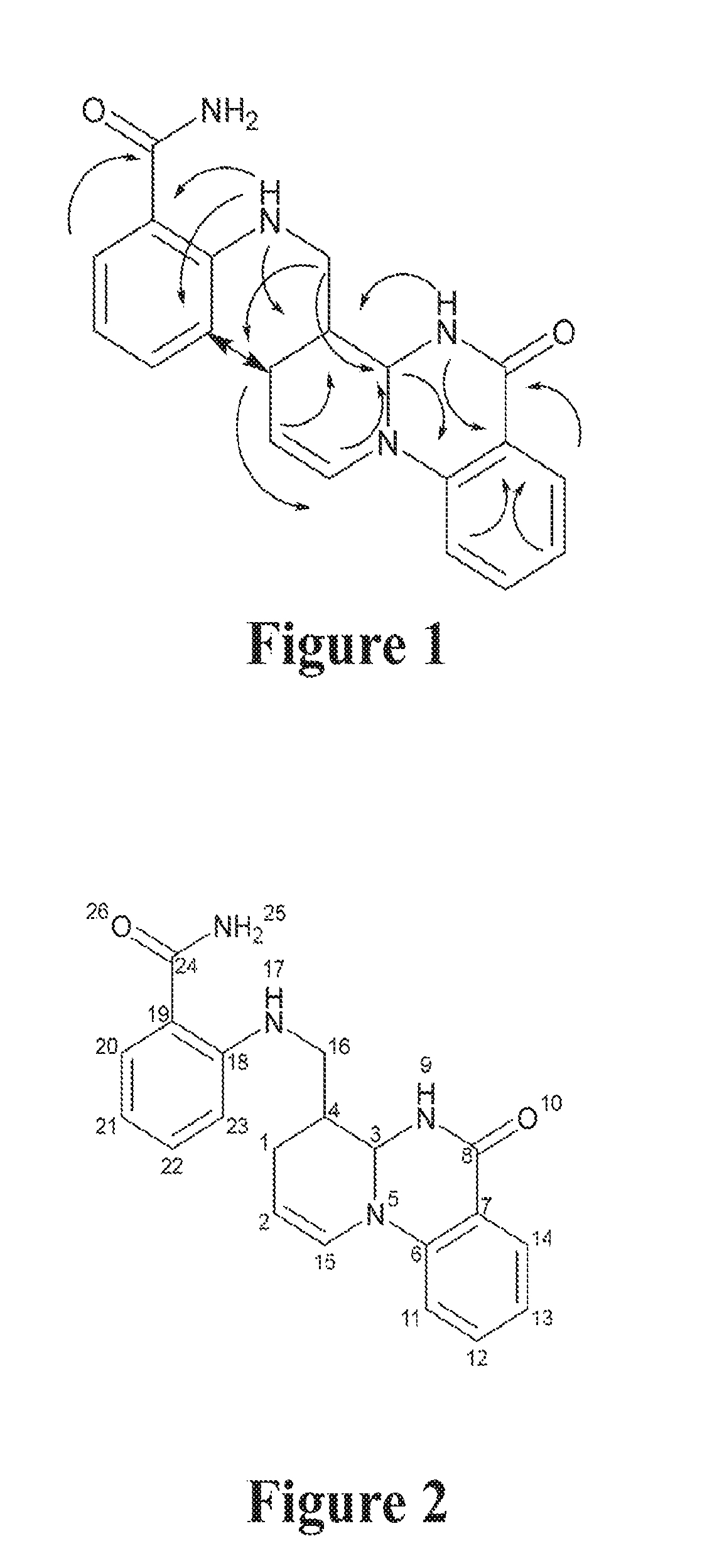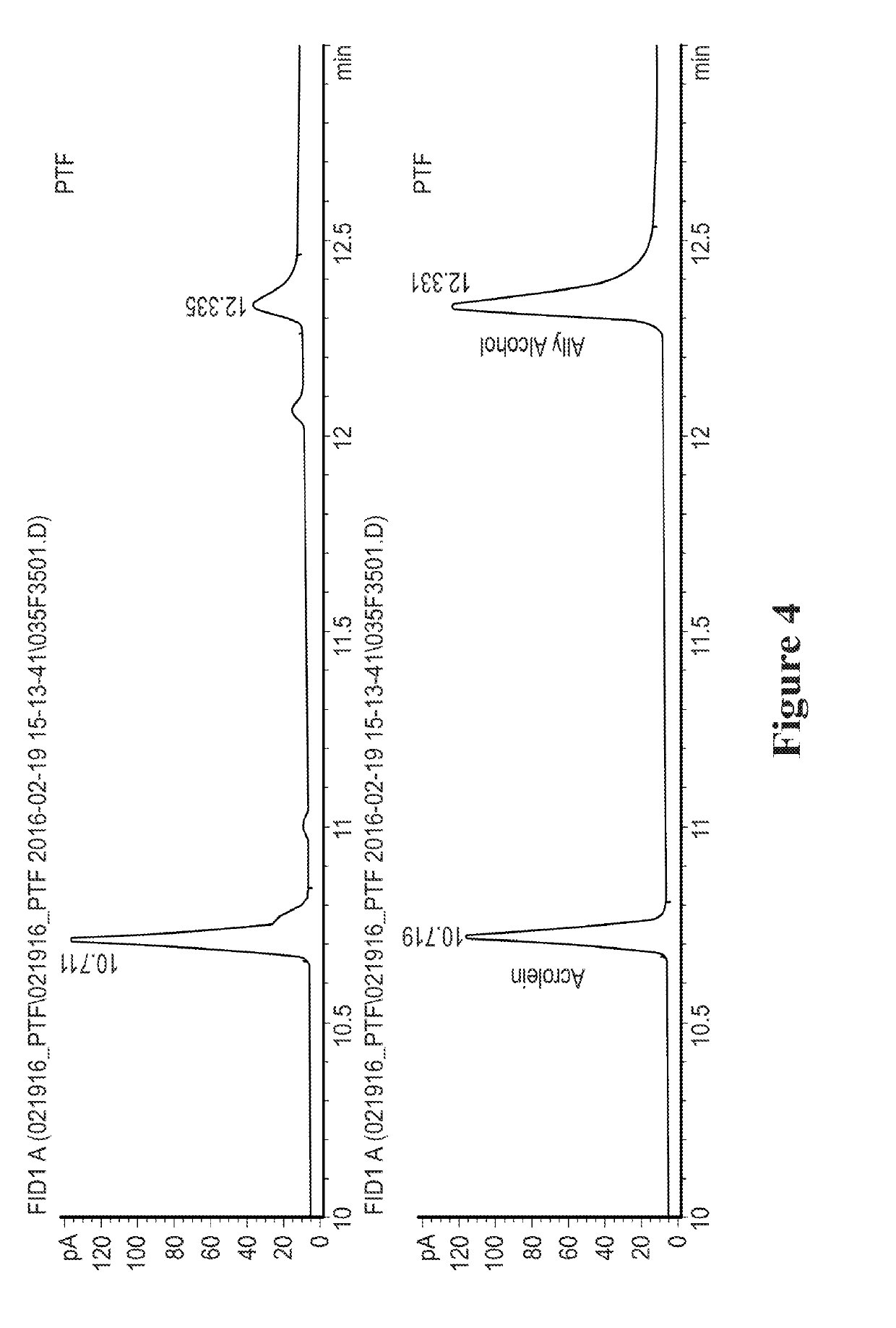Acrolein scavenging in ptf and other 1,3-propanediol derived polymers
a technology of 1,3-propanediol and scavenging, applied in the field of polymer derived from 1, 3-propanediol, can solve the problems of limited possible solutions to their degradation, and the control that can be used is limited to time and temperature optimization
- Summary
- Abstract
- Description
- Claims
- Application Information
AI Technical Summary
Benefits of technology
Problems solved by technology
Method used
Image
Examples
Embodiment Construction
[0020]The desire to detect and control 1 in PTF and other polymers such as other polyesters is several fold: assessment and control of polymer degradation during processing and control of a known toxin and mutagen. The presence of 1 can develop during melt processing of PTF and other 1,3-PDO containing polyesters. As applications and development with PTT and PTF are expected to expand, safety is of concern where the formation of 1 can occur. In the late 1990s and early 2000s, regulatory agencies evaluated the safety and potential harm of 1 in food products and determined in most cases that there was 1) a poor understanding of the acute health effects of 1 at low levels, 2) that 7.5 ppb of 1 in food may be considered an upper limit of what is possible to have based on known chemistry, and 3) that there is little to no information on the chronic effects of 1 from foodstuffs. There is no assessment of the safety of 1 in packaging materials. Recent research in the last 10 years has clea...
PUM
| Property | Measurement | Unit |
|---|---|---|
| Temperature | aaaaa | aaaaa |
| Fraction | aaaaa | aaaaa |
| Fraction | aaaaa | aaaaa |
Abstract
Description
Claims
Application Information
 Login to View More
Login to View More - R&D
- Intellectual Property
- Life Sciences
- Materials
- Tech Scout
- Unparalleled Data Quality
- Higher Quality Content
- 60% Fewer Hallucinations
Browse by: Latest US Patents, China's latest patents, Technical Efficacy Thesaurus, Application Domain, Technology Topic, Popular Technical Reports.
© 2025 PatSnap. All rights reserved.Legal|Privacy policy|Modern Slavery Act Transparency Statement|Sitemap|About US| Contact US: help@patsnap.com



